First of all, why is sales planning critical to your business’s success?
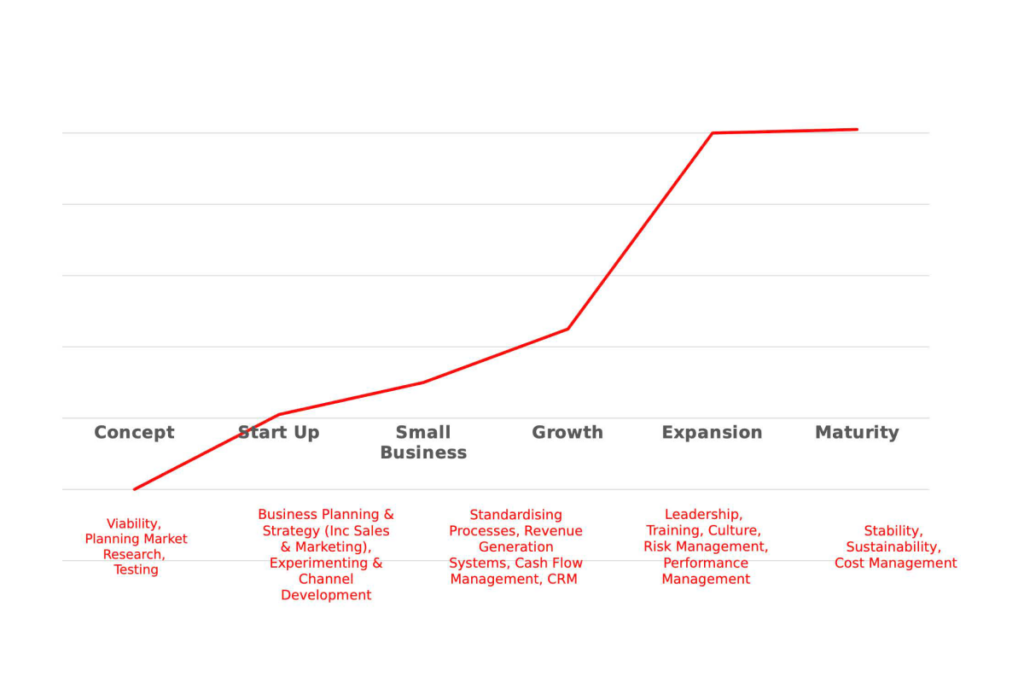
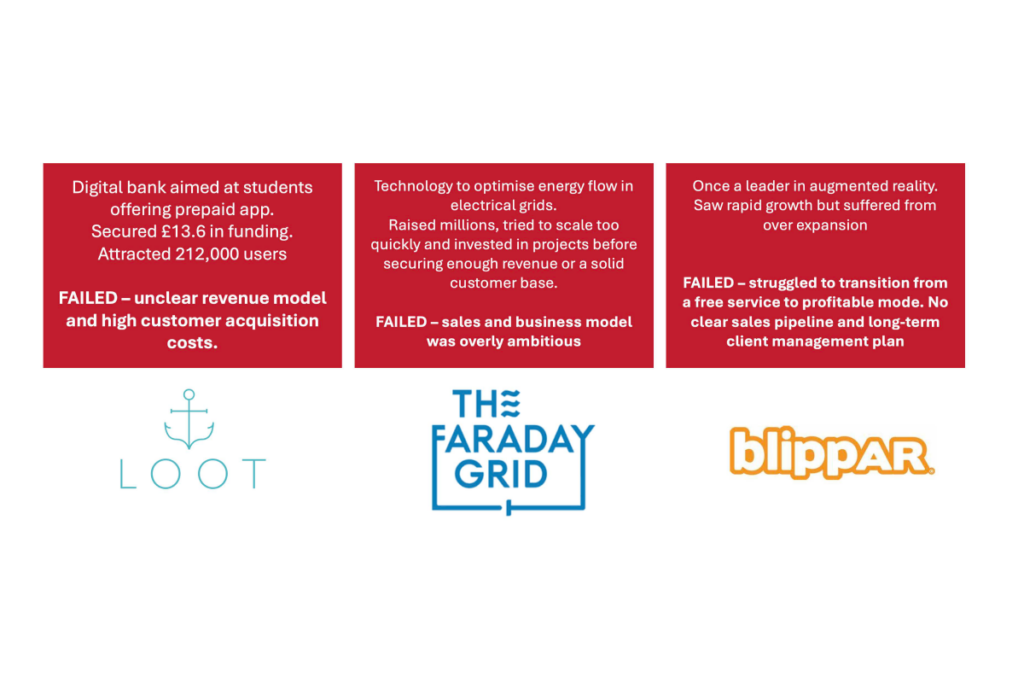
to develop a purpose-built sales plan that is tailored to your business needs.
Aligning your sales vision with overall business goals is essential for driving growth and ensuring everyone is working towards a common objective.
If sales teams don’t have a clear understanding of how their targets contribute to broader company goals, they risk pursuing activities that aren’t aligned with long-term strategic priorities.
By translating business objectives into specific, actionable sales goals, you create a roadmap that guides decision-making, prioritises the right activities, and fosters a sense of shared purpose.
This alignment not only boosts performance but also improves cross-functional collaboration and helps maintain focus on what truly matters for the company’s success.
Start by focusing on how you want to be known in the market that you operate in. For example, do you want to be known for great customer service, your speed, or something else? Make this central to your sales vision.
Now list the quantifiable results that you want to achieve. Use the SMART (Specific, Measurable, Achievable, Realistic, Timebound) goal-setting system.
For example, you may want to achieve £500k of revenue for the coming year. If you have a team, then set team-specific SMART goals.
Where possible, break down new business (growth) and account management targets (retention) targets.
Now let’s think about the culture you want to promote. You might be thinking, What’s this got to do with planning?
Well, this will help to embed the foundations for your team’s success and set the sales expectations.
Think about:
– How do you want your team to navigate sales conversations? Do you want them to:
* sell at all costs (short-term focused)
* be considered and consultative (progressive focus)
* Pay attention to understanding their challenges, needs and driving value (long-term focused)
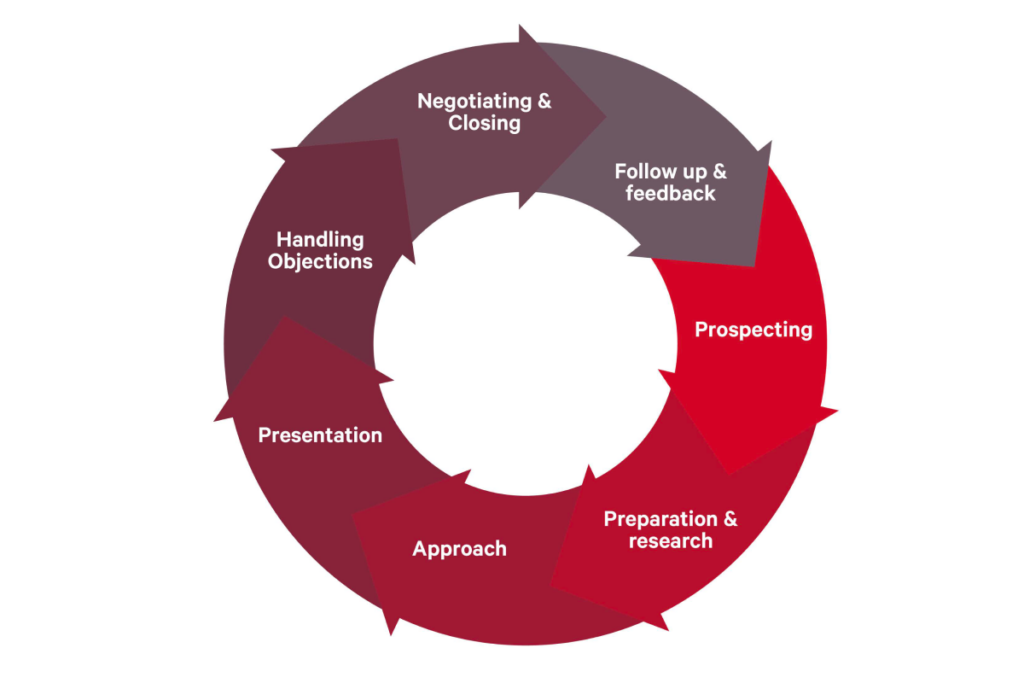
– How do you want your brand to be spoken about? Everyone in your business is a ‘brand ambassador’ and needs to be aware of how to position the company and the unique products, services, and solutions offered.
– What values and behaviours are important to you? Whether you like it or not, your values are important to how you run and operate your business and team.
* Understand why they matter to you.
* Communicate their relevance.
* State the behaviour you expect from your team.
For example, if you value honesty, then your expectation is for your team to tell the truth. Your intentions matter, but your actions are even more important.

A value proposition that is tailored to each of your ideal customer profiles is the key to standing out in a crowded market.
It clearly articulates why your product or service is the best fit for their unique needs. Generic messaging falls flat because it fails to connect with the specific pain points and priorities of different customer segments.
By crafting targeted value propositions, you show customers that you understand their challenges and can deliver a solution that meets their expectations.
This focus increases trust and engagement and ultimately leads to higher conversion rates and customer loyalty.
We recommend using the value canvas template below, which is a great way to understand an ideal client’s specific challenges and focus your messaging effectively.
By understanding the ‘VALUE’ YOU deliver to clients, you can identify areas where you can improve or where solutions can be iterated to create incremental value.
Additionally, the insights from this exercise will help you communicate effectively with internal and client stakeholders, i.e. It will inform your key messaging.
Complete the VALUE CANVAS for your ideal customer profiles.
Start with the right-hand side client jobs (1), pains (2), and gains (3), and then focus on the left-hand side, i.e., your company’s solutions (4), pain relievers (5), and gain creators (6).
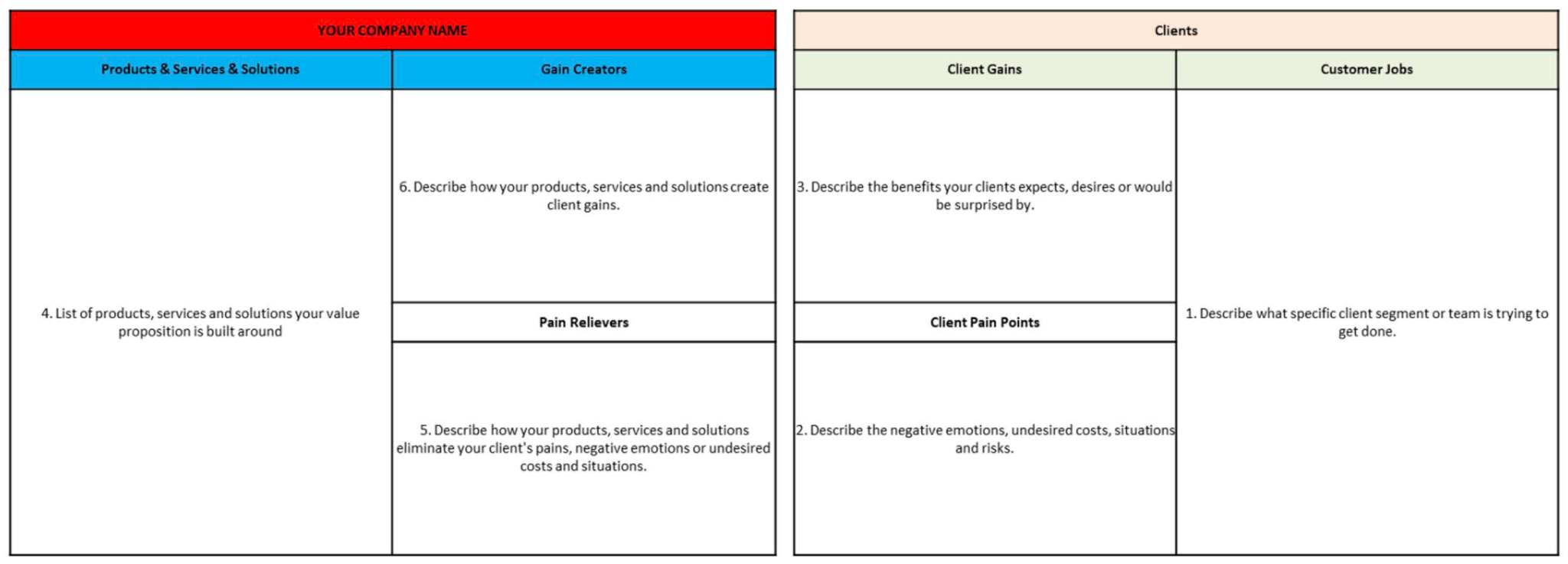
If you are unable to answer the questions related to your sales vision, goals, culture, selling style, and value proposition, then before fast-forwarding to the next section, spend the appropriate time doing the work you need to get the results you want!
Understanding your market and identifying the right distribution channels are fundamental steps in your sales planning process.
Without a clear definition of who your ideal customers are, you risk wasting resources chasing the wrong audience.
Validating your market ensures there is areal demand for your product or service while choosing the right distribution channels determines how effectively you can reach your target customers.
By focusing on these elements early, you can refine your approach, minimise costly missteps, and create a streamlined path to revenue growth.
Who did you develop your solution for?
A solution that has multiple applications and can be used across sectors sounds great, but to be effective, you need to be targeted and specific. Focus on 2 critical areas:
1. Consider the problem your solution solves and focus on a single industry or market sector initially.
2. Do your research and identify the size of that market.
In completing this exercise, you now have a more refined and manageable target list of prospects.
Now you have your market and a target list, but what prospecting channel will be most effective to reach your target audience?
There are proactive and reactive channels, and your strategy needs to consider both.
Your goal should be to select the channel based on your target audience and where they ‘hang out’.
Using the school example reference previously, the most effective way of accessing the school decision makers might be through regular events that Head Teachers attend.
By attending the events, you can network, collect their information, and then communicate with them via email, referencing the event and your conversation.
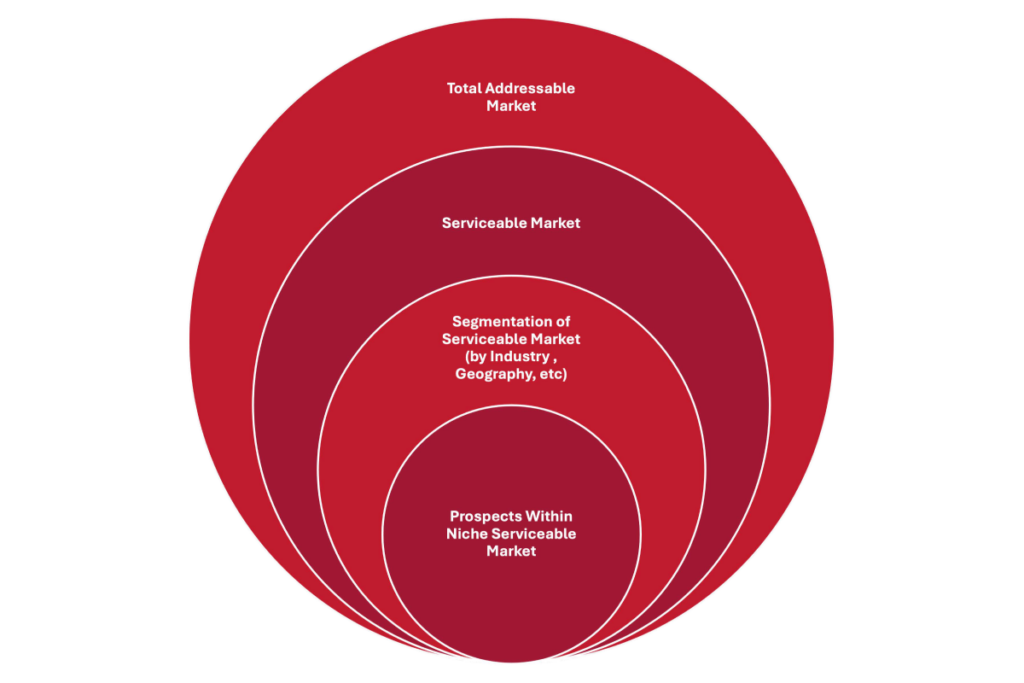
In any sales process, knowing your stakeholders—the people who influence or decide the outcome—is critical. This includes not just the decision-makers but also the influencers, end-users, and gatekeepers who play a role in shaping the deal.
Without a clear understanding of who these stakeholders are, what their needs and priorities might be, and how they influence the buying process, you risk misalignment and missed opportunities.
By mapping out key stakeholders early on, you can tailor your approach, address specific concerns, and build stronger relationships, ultimately leading to a more effective and efficient sales strategy.
Don’t confuse marketing personas with the buyer or stakeholder personas. There is a subtle difference.
1. The marketing persona’s objective is to generate awareness and interest and attract the right type of prospects.
2. The sales or buyer persona’s objective is focused on understanding the buying process, needs, and motivations for the decision-maker.
As part of your sales planning, you must identify who’s involved in the process and what their role is. In smaller businesses, the same stakeholder is more likely to be responsible for carrying out the different roles.
For example, in a small business, the owner will be the decision-maker and is more likely to be involved in evaluating the solution’s effectiveness, whereas in a larger business, a user may be assigned the role of evaluating the effectiveness, and the decision-maker may be the department head.
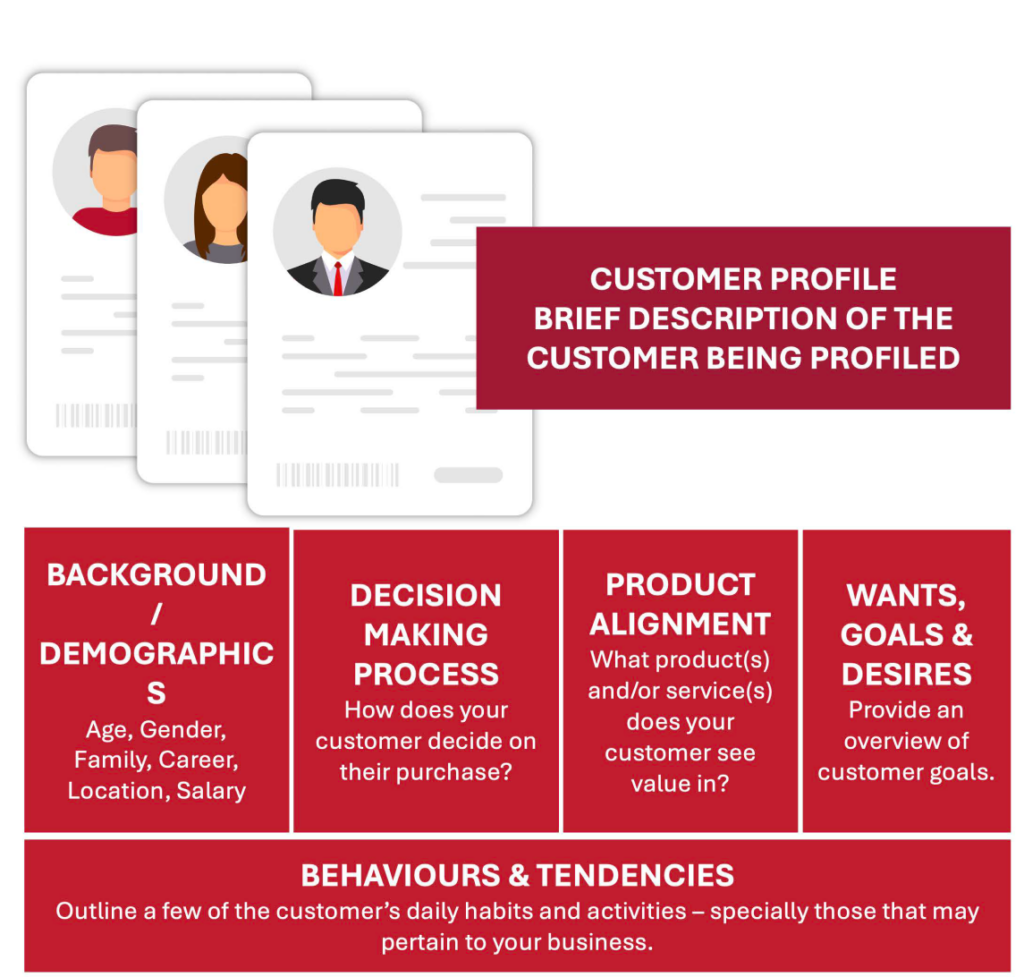
Understanding and mapping the customer journey is fundamental to the sales planning process. It gives you a clear view of how potential customers interact with your business at every touchpoint, from awareness to purchase and beyond.
By mapping this journey, you can identify the moments where prospects are most likely to engage, hesitate, or drop off. This insight allows you to tailor your sales tactics, messaging, and support to meet the prospect’s needs at each stage.
When your strategy aligns with the prospect’s buying process, it reduces friction, shortens the sales cycle, and boosts conversion rates, leading to better outcomes for both your business and your clients.
Bridge the gap in your understanding of the buying journey and your selling processes by taking time to understand where your prospect has come from and what they may or may not know.
Due to the plethora of choices and readily available information available, it’s estimated that before a buyer engages with a business about a solution, they have typically completed 60% of their research independently (Gartner).
– Make a list of questions to help you understand their journey and what research they have completed.
– Qualify their understanding and needs.
– Keep updating this list as the buying process will vary depending on the channel.
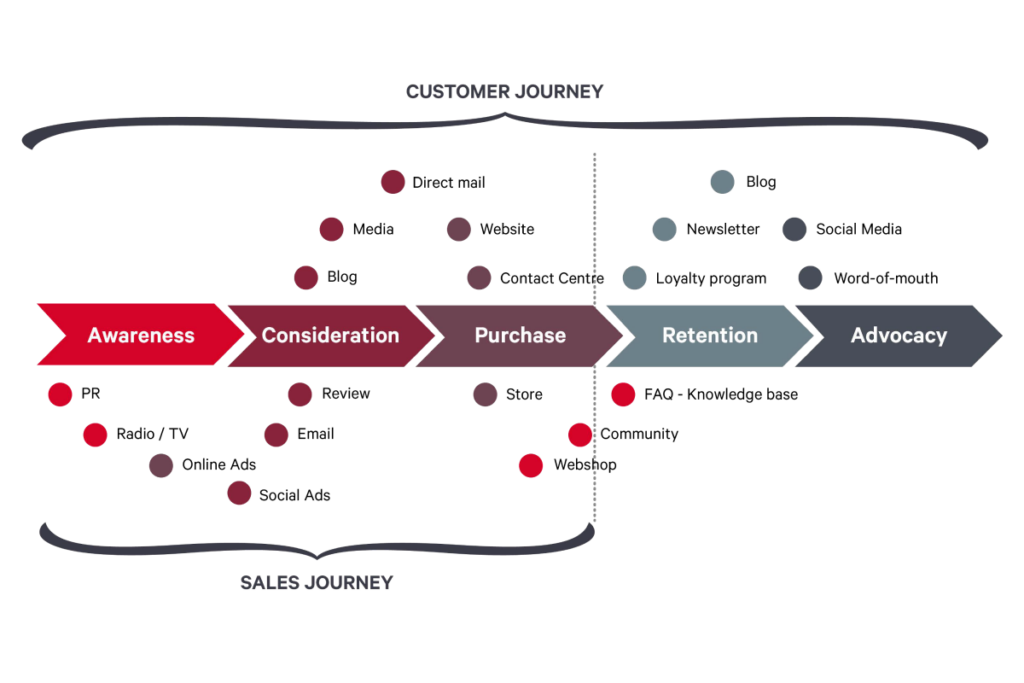
Mapping out your sales process with clear, defined stages is critical to building a scalable and predictable sales strategy.
It gives your sales team a structured pathway to follow, ensuring consistency in how deals are managed.
By having specific steps that every sale must progress through, you create a shared understanding of what actions need to be taken at each stage, reducing confusion and guesswork.
This clarity allows sales reps to focus on what matters most: advancing the opportunity and meeting the prospect’s needs.
Moreover, a well-defined sales process makes it easier to measure performance, identify bottlenecks, and refine your approach over time.
It also provides reliable data for forecasting, giving you a better sense of when deals are likely to close and what factors might be affecting your sales pipeline.
Ultimately, having a mapped-out process not only improves your team’s efficiency but also helps create a better experience for your prospects by ensuring a consistent and professional approach to every sale.
Your sales process is a roadmap for taking qualified prospects through a set of defined stages and converting them into paying clients.
The best sales processes acknowledge both the buying and selling journey and ensure the critical validation checks (qualification) are in place. The optimum number of sales stages is 5 to 6.

The key to developing your sales process is in understanding and setting guardrails, including:
If your challenge is with generating the right leads, or converting prospects to paying clients, or retaining clients,
Then the chances are that there is a disconnect within your sales process, and it needs to be better defined and mapped!
A lack of detail can often leave room for ambiguity, and that is not what you want in your sales process.
Tracking critical sales metrics is essential for making informed decisions throughout the sales strategy and planning process. These metrics provide the data-driven insights needed to evaluate the effectiveness of your strategy, understand your sales team’s performance, and measure progress against your goals.
By regularly monitoring metrics like lead conversion rates, average deal size, sales cycle length, and customer acquisition costs, you can identify trends, uncover bottlenecks, and quickly adjust tactics to stay on course.
Metrics also serve as a feedback loop, helping you validate whether your strategy is working or needs refinement. Without tracking, you risk operating on assumptions rather than facts, which can lead to poor decisions, wasted resources, and missed opportunities.
In essence, tracking the right metrics turns your sales plan from a static document into a dynamic, living process that can evolve and improve based on real-world data.
The single most important calculation we recommend you make is with regard to your sales velocity.
Sales velocity is a measure of how quickly deals move through your pipeline and generate revenue.
The four metrics used to calculate sales velocity are critical for you and your team to know and focus on.
When utilising a CRM, these metrics are critical to ensuring consistent appraisal.
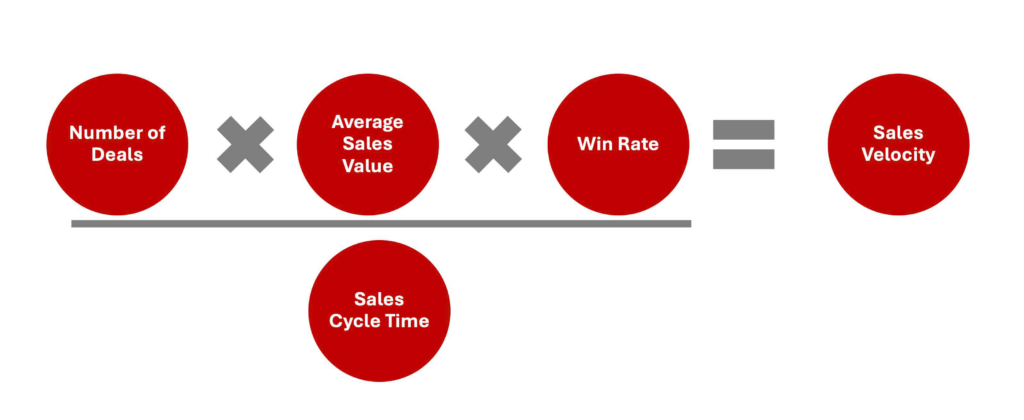
As your business and sales team grow, there are a range of sales benchmarks that become increasingly important to monitor and track.
Ultimately, what these allow you to do is review and update your sales plan to better define your prospects, measure effectiveness, diagnose bottlenecks, and optimise to scale and grow effectively.
Account management plays a pivotal role in the sales strategy and planning process because it focuses on nurturing and growing relationships with your existing clients. While acquiring new customers is essential, many small businesses overlook the
significant revenue potential within their current customer base.
Effective account management helps ensure client satisfaction, builds trust, and opens the door for upselling, cross-selling, and long-term retention.
By including a strong account management focus in your sales strategy, you create a proactive plan for customer engagement beyond the initial sale. This approach not only improves client loyalty but also increases customer lifetime value (CLV), which can be more cost-effective than constantly acquiring new clients.
Additionally, it provides valuable insights into customer needs and feedback, which can inform product development and sales tactics, making your strategy more customercentric.
You’ve done the hard work in acquiring a new customer; now make sure you have the right systems and processes in place so that they receive continued value and stay as a valuable client for the long term.
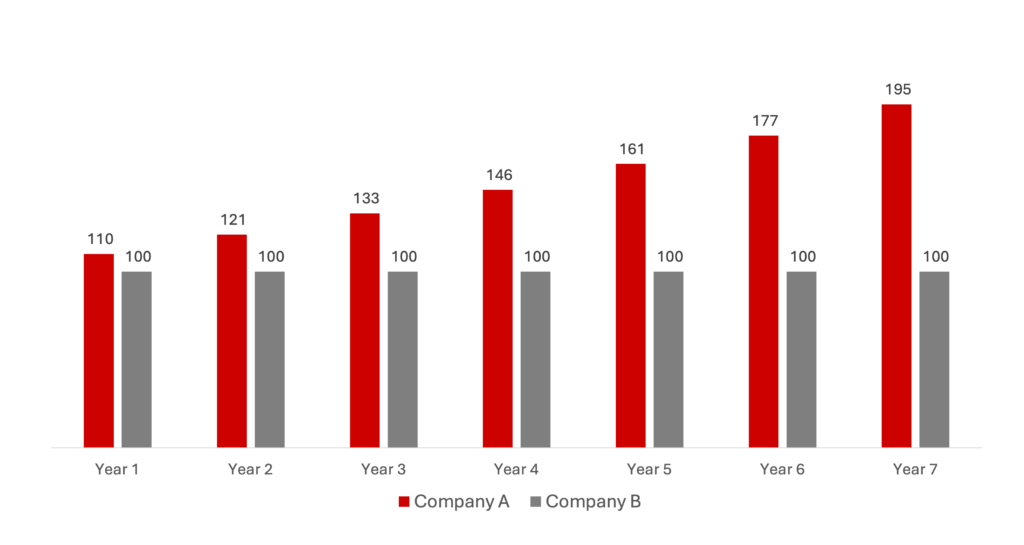
Imagine two businesses: one retains 90 per cent of its customers—the red line—and the other retains 80 per cent—the grey line
If they were both adding new customers at a rate of 20% per year, then company A would achieve a 10% net growth in customers per year, whilst company B would achieve 0%
If we extrapolate this over 7 years, company A will nearly double in size, whilst company B will see no actual growth
That 10% increase in customer retention from company A to B will continue to create a doubling of customers every 7 years, assuming the new customer acquisition rate is maintained.
If you’re committed to building your sales plan and a repeatable process, let’s talk.
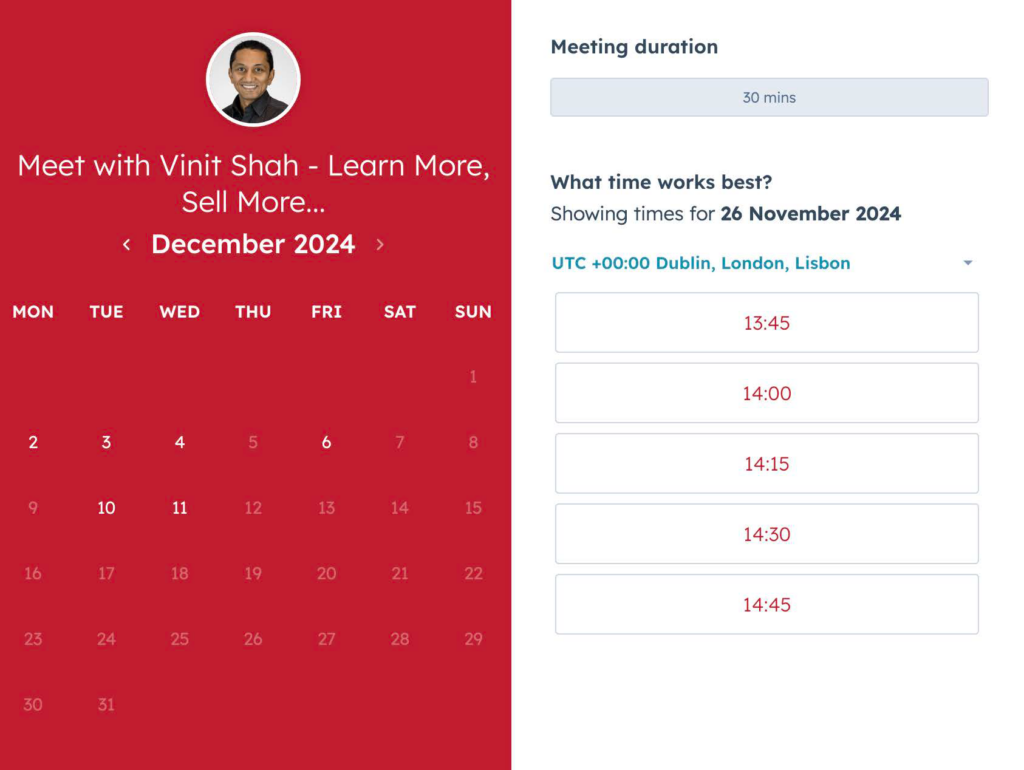
No cookie-cutter approaches.
Just a tailored discussion about your unique situation.
We’ll take the time to understand your challenges and outline your options.
This isn’t just a call. It’s the first step in crafting your Sales Playbook: a detailed guide tailored to your business needs.
Because we believe in empowering you to
Learn More, Sell More